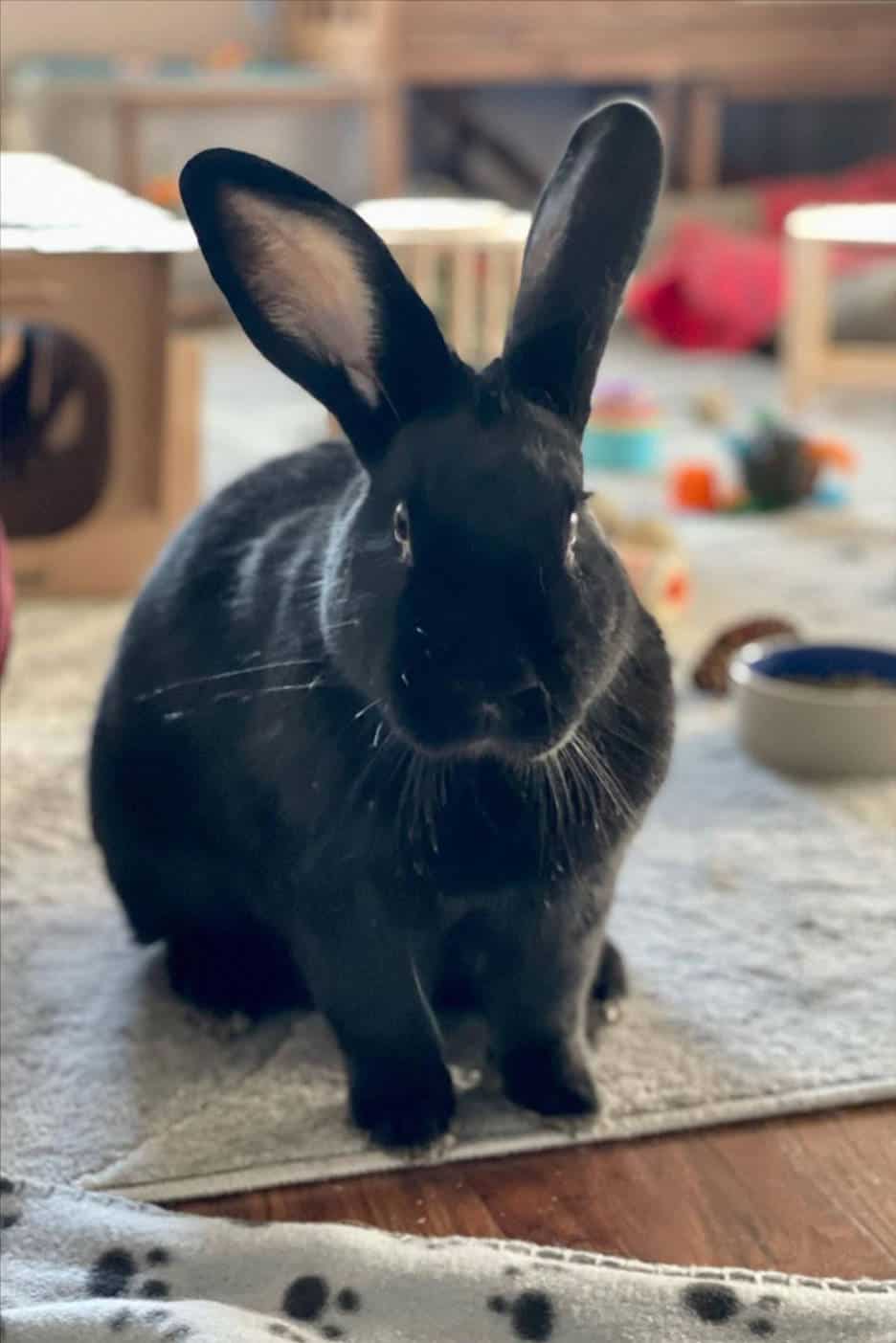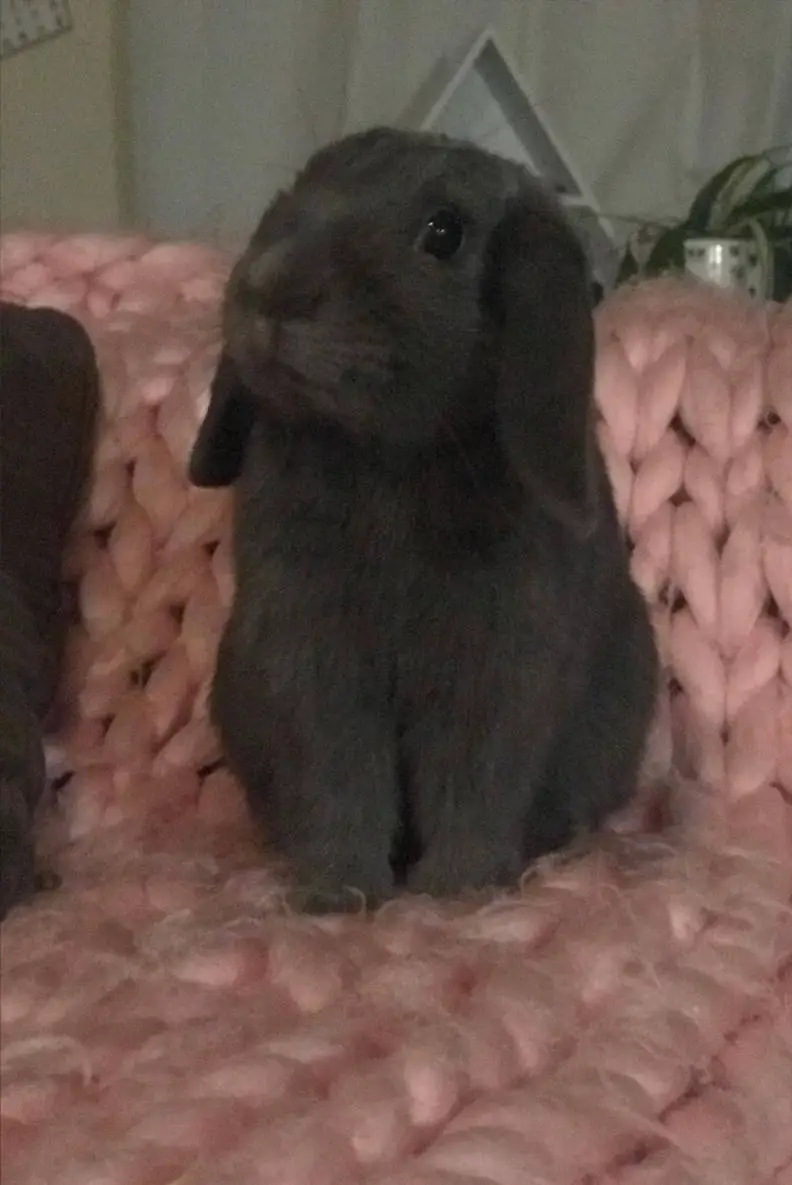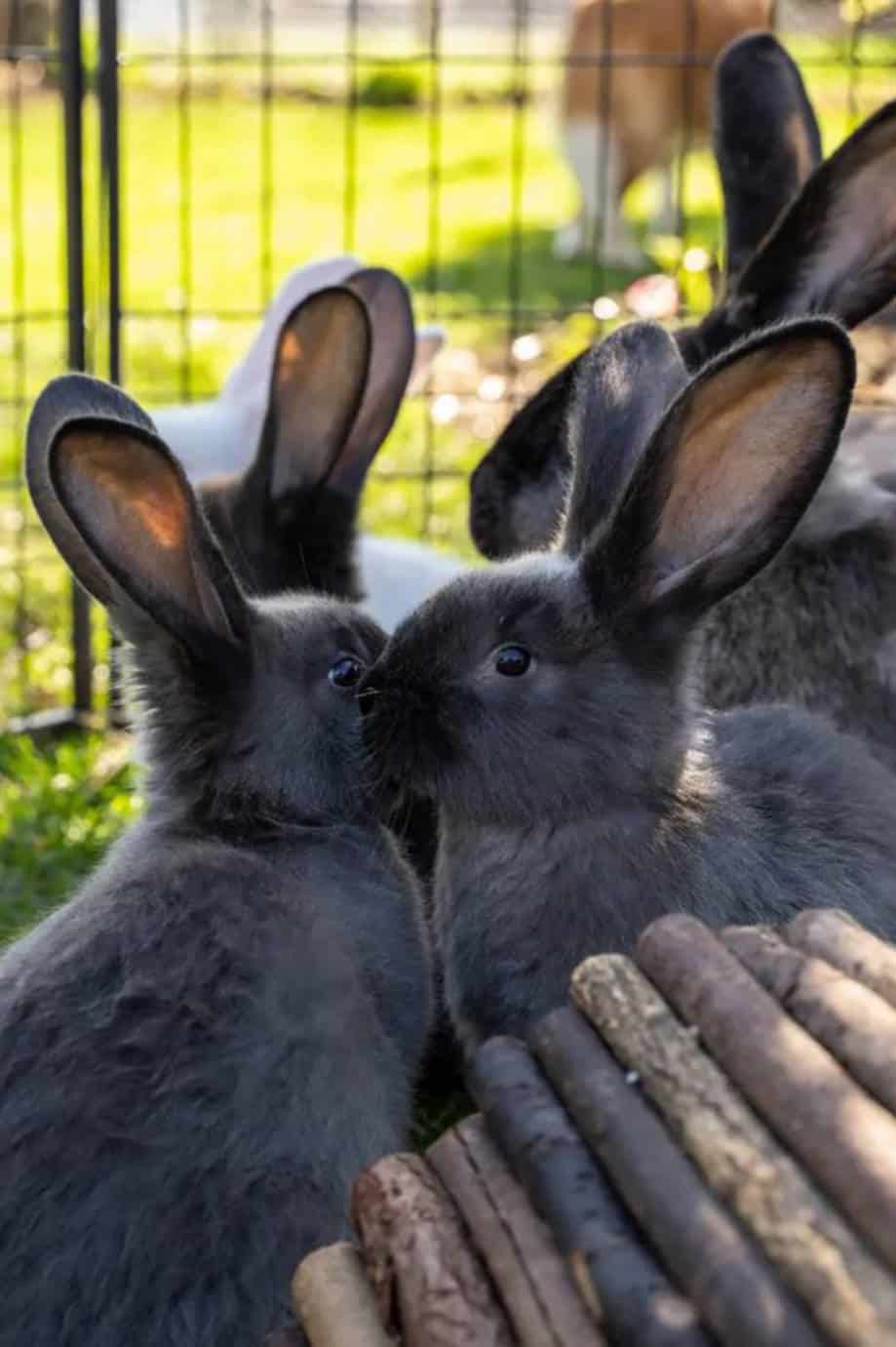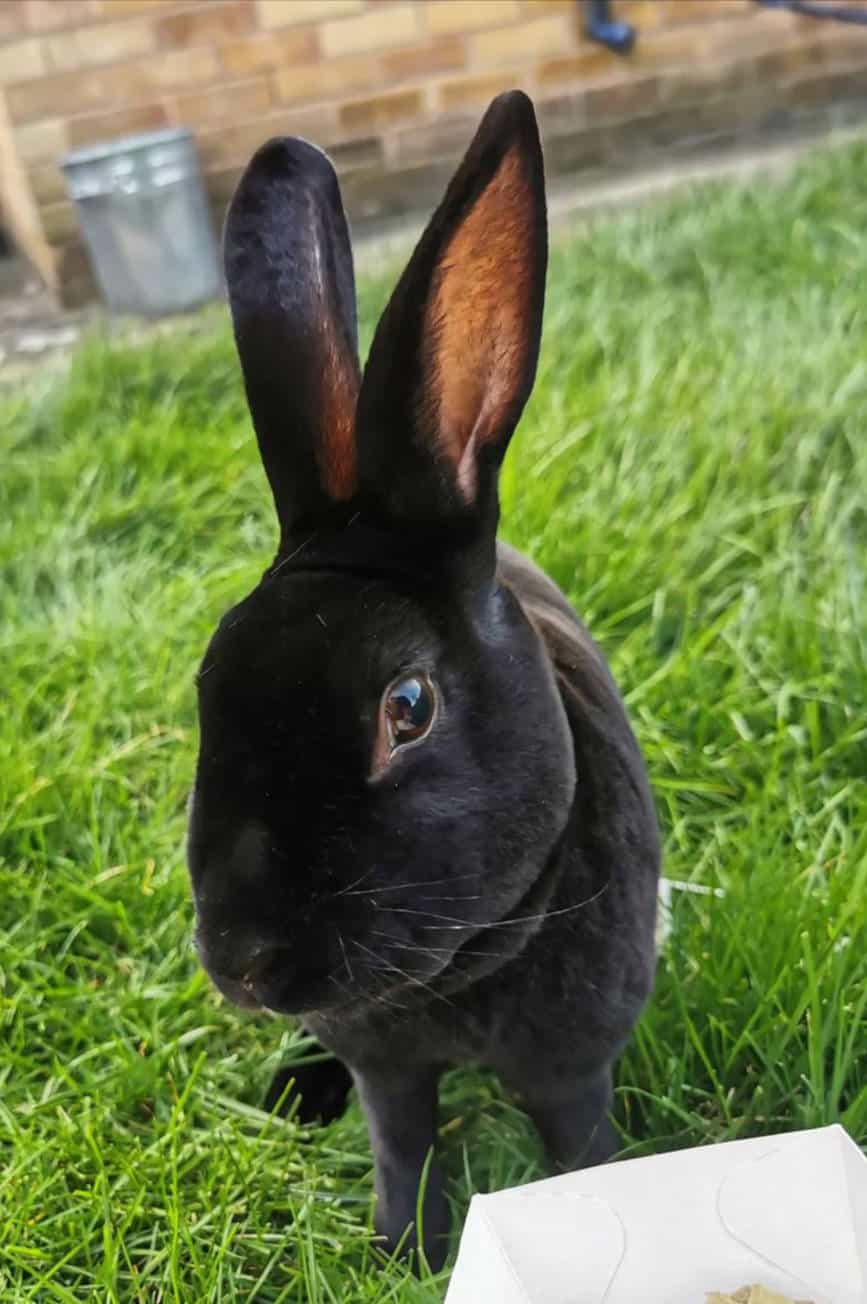Rabbits are lovely creatures to have around, maybe as a breeder or a pet lover. However, there are currently 50 breeds available and approved by the American Rabbit Breeders Association, making it quite difficult for you to choose.
If you love black rabbit breeds and you want one, check out these seven unique black rabbit breeds.
Satin Rabbit

Also known as the Satin Havana, this breed was discovered by Walter Huey, a rabbit rearer from Pendleton, who was trying his hands on random experiments.
It’s one of the most colorful domestic rabbits and was recognized by the American Rabbit Breeders Association in 1956. Mild and friendly, it’s famous for its soft furs, which have unique satin sheer and shine in the presence of light.
A full-grown Satin Rabbit can weigh 3.6 to 5kg (8 – 11lbs) and live up to 9 years under normal circumstances.
It comes in 11 colors; black, chocolate, copper, red, Siamese, broken, blue, chinchilla, otter, white and Californian, all approved by the American Rabbit Breeders Association.
Like most rabbits, it has full ears, a commercial body type, fully rounded posterior regions, and bright, attractive eyes. Most American farmers rear Satin Rabbits for meat while UK farmers raise them for their furs.
Caring for Satin Rabbits is not difficult. Brush their soft furs gently to maintain and keep them smooth. Make sure they are fed hay, fruits, green leaves, and veggies.
The fodder should be rich in proteins and fiber; you can go for orchard grass, meadow hay, oat hay, and more. Also, provide them with lots of water. Let them out of their enclosure for a while so they can bond with the environment and socialize.
Staying indoors for a long time may affect their level of Vitamin D, so take them out for fresh air and sunshine.
Have a vet doctor check them if you notice anything strange with them. And yes, you can keep them as pets in places with children, first-time owners, aged people, and singles.
Beveren

Beveren Rabbits, regarded as one of the largest and oldest breeds, originated from Beveren, a town in Belgium. They were initially raised for meat and fur, probably because of their large body size.
Still, they’ve been used as pets and show animals over the years. The male Beverens weigh up to 10 pounds while their females grow up to 12, and their average lifespan ranges from 8 to 10 years. Both sexes have soft furs, which they shed during spring and fall.
The American Rabbit Breeders Association officially recognized this breed of rabbits in 1919. These energetic and active bunnies come in different colors, but the Association recognizes just three; blue, black, and blue-eyed white varieties.
With a mandolin body type, a full round face, and a broad back, their ears are full and can measure up to 5 inches when alert.
Because of their large size, Beveren rabbits need a big cage relative to their size to have enough space to hop around, which, in turn, determines how long they live.
If you want them indoors, ensure your home is free from anything that can hurt them, as these big bunnies can get hyperactive. They are also large eaters, so you should stock their cages with lots of hay, vegetables, fruits, and pellets.
However, don’t give them fruits like apples and pears because they contain cyanide, which harms rabbits. Also, don’t include rhubarb and cherry trees in their menu.
These cute rabbits are great company for aged people and houses with grown children. If you’re a patient, first-time owner, or single, they’ll do too.
Havana

Havana rabbits, which originated from the Netherlands, were called Castor breeds till 1903, when a Frenchman renamed them. They were introduced to the United States in 1916, and since then, they’ve endeared themselves to most rabbit rearers.
They are known for their small size; they weigh 6.5lb at their biggest, which some people consider a medium size. They have compact body shapes; short rounded bodies, medium-sized eyes, and short ears.
The American Rabbit Breeders Association recognized the Black Havana rabbit in 1980, 15 years after admitting the blue Havana. Other colors recognized are chocolate and broken.
Havana rabbits do well both indoor and outdoor, as long as they have enough space to hop and play. However, they should be given some out-time to stretch their legs and feel the fresh air and sunshine.
Whichever one they are in, ensure that their environments are clean and safe, especially their beddings. You might also want to brush their furs at least twice daily to keep them in good condition.
Whether you’re staying alone, have a family, aged, or a first-time owner, you can breed them. Like every other type of rabbit, their diet must include a considerable amount of hay, pellets, vegetables, fruits, and green leaves.
Avoid giving them too many lanthanum-containing leaves. Havana rabbits are also allergic to sugary vegetables, so you must be careful with the kinds of cud you feed them. They love to be picked by and played with by their owners, so it is best to socialize them.
Mini Lop

Mini Lop rabbits came into existence in 1978 when Bob Herschbach crossbred the German Lop breed with a Chinchilla breed to form a new breed called Klein Widder.
However, the American Rabbit Breeders Association did not approve this new breed for reasons best known to them. In 1980, this same breed was presented to the association by Herby Dyke as Mini Lop, not Klein Widder, and it was approved.
The Mini Lop rabbits share looks with the Holland Lop breeds, and it is often difficult to tell them apart. The only difference is that the latter is usually larger than the former.
The Mini Lop is a small breed, almost a dwarf weighing nothing more than 6.5 pounds. The bucks are usually bigger than the does though all are relatively small. They are pretty sturdy and robust, with compact body shape and lop ears hanging over their faces.
They come in different colors; black, Agouti, broken, pointed white, self, shaded, wideband and ticked, approved by the American Rabbit Breeder Association, and can live up to 14 years if properly cared for.
Mini Lops are generally calm and even-tempered as a descendant of Lop origins. These luxurious soft-furred, medium-length rollback-coated, four-legged creatures should be reared in a spacious cage, with enough space to perform their daily activities.
They should be let out to explore the environment at intervals; this helps their social life. You don’t need to prepare a special diet for them; hay, pellets, green leaves, and vegetables will do.
However, you must be careful when selecting their food. Whether single, married, first-time or repeat pet owner, aged, an indoor or outdoor person, Mini Lops can fit into anyone’s lifestyle.
Flemish Giant Rabbit

Are you looking for a rabbit to rear for meat, fur, shows, breed, or pet? Then, search no further; Flemish Giant Rabbit Breed can serve those purposes.
These four-in-one rabbits are also known as ‘Gentle giants’ because of their big size; this breed is one of the largest rabbit kingdoms. A flemish giant rabbit weighs 22lbs on average with 30 inches in length at maturity.
This species has produced a rabbit that weighs 50 pounds, a record yet to be broken.
The Flemish giant rabbit originated from Flanders, Belgium, in the 16th century. The American Rabbit Breeder Association recognized it in 1929 with seven colors; sandy, white, black, blue, steel grey, light gray, and fawn.
It has floppy, upright ears that can stand up to 7 inches. As with most large breeds of animals, the Flemish giant rabbit has a short lifespan; some live for as long as seven years while others barely make it to age 4.
They have a mandolin and semi-arch body type; the bucks have a bigger head than the does.
Because of their large size, Flemish giant rabbits need a large place to live, their cage must measure at least 3 feet by 4 feet. You could also consider a large dog crate since these bunnies look like medium-sized dogs.
Wherever you house them, make sure it has a firm bottom laid with beddings. Their coats are very thick, so they should be kept in a well-ventilated area. It is also important you let them out of their cage every day to throw their weight around.
Talking of food, Flemish giant rabbits eat a lot because of their size. Nonetheless, their diet is similar to other breeds: hay, vegetables, green leaves, pellets, and fruits.
Mini Rex

As one of the breeds that originated from the United States, the Mini Rex is nicknamed ‘The people’s choice in a fancy breed.’ It has a compact body and short and spiky fur, which usually leaves an unforgettable impression when touched.
It won the hearts of many because of its size, compared to the standard Rex, whose 10.5-pound size seems too big. Fully grown, the Mini Rex weighs 4.5 pounds, which makes it handy and portable.
The breed was officially recognized in 1986 and was attributed to Monna Berryhill. All Rex breeds are considered calm and friendly, Mini Rex inclusive. However, they become frightened easily and might become distant over time.
The rabbit breed comes in diverse colors; picking your favorite might seem difficult – blue, Himalayan, lilac, castor, sable, lynx, opal, broken, tricolor (white rabbits with color mixes like orange and black, orange and chocolate, fawn and blue, etc.).
It can live up to 10 years if properly cared for. It requires less effort to maintain its velvety fur. A wet rag is enough to make it clean again if it soils its body.
This rabbit breed doesn’t do well outdoors; it is best suited for indoor spaces and easily fits into anyone’s life. However, avoid brushing the Mini Rex rabbit too often as this may roughen the texture of its coat.
It’s important you also give it balanced meals to maintain its good looks and soft fur. Most rabbits serve Mini Rex hay, green leaves, veggies, and pellets.
Jersey Wooly Rabbit

This rabbit breed derives its name from the place it originated from. In 1984, the French Angora and Netherlands Dwarf breeds were crossbred in New Jersey, resulting in the Jersey Wooly rabbit.
The American Rabbit Breeders Association recognized it four years later, in 1988. Also called the ‘no-kick bunny,’ they are sweet, playful, and docile. Rabbits of this kind are usually small and have compact body sizes.
At maturity, they weigh just 3 lbs. Their 2-3 inches ears are usually erect on their mug heads.
The American Rabbit Breeders Association recognizes six different color categories of the Jersey Wooly rabbit. The Agouti group, the broken group, the self group( containing the black rabbits of the breed), the shaded group, the tan pattern group, and the AOV group.
Jersey Wooly rabbits can live up to 10 years, shedding their coat during spring. However, they are likely to have health issues such as dental disorders because their jaws are slightly longer than their heads. Get a good vet doctor to correct this misalignment when you notice this.
Also, protect them from parasites. Clean their environment regularly to keep out mites, maggots, flies, etc. Or else, you’ll have dead rabbits on your hands. To keep them in good shape, brush their coat once in a while and clean them up with a slightly moist cloth.
Irrespective of their small size, their cage, with a plastic bottom and clean beddings, should be big enough to accommodate their running around. Hay, vegetables, fruits, green leaves, and pellets should constitute their meals, just like every other rabbit breed.
Summary
Whether bred for meat, sport, or company, black rabbits are a species you won’t regret having around. However, your choice of black rabbit breeds should be informed by their different features and your purposes for rearing rabbits.
Nonetheless, make sure you have a nice and calm environment for these lovely black bunnies, and they’ll be around long enough to suit your purpose.